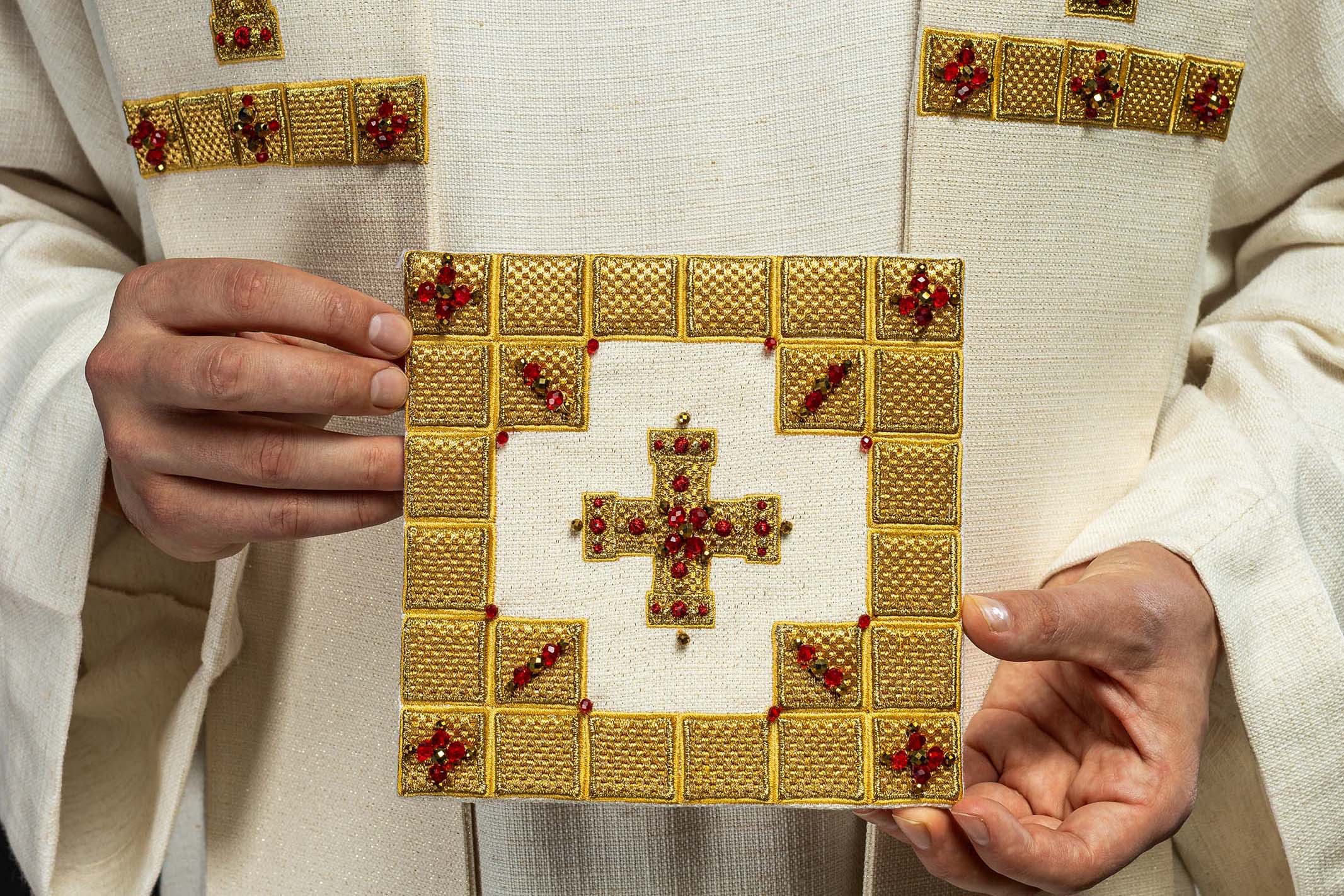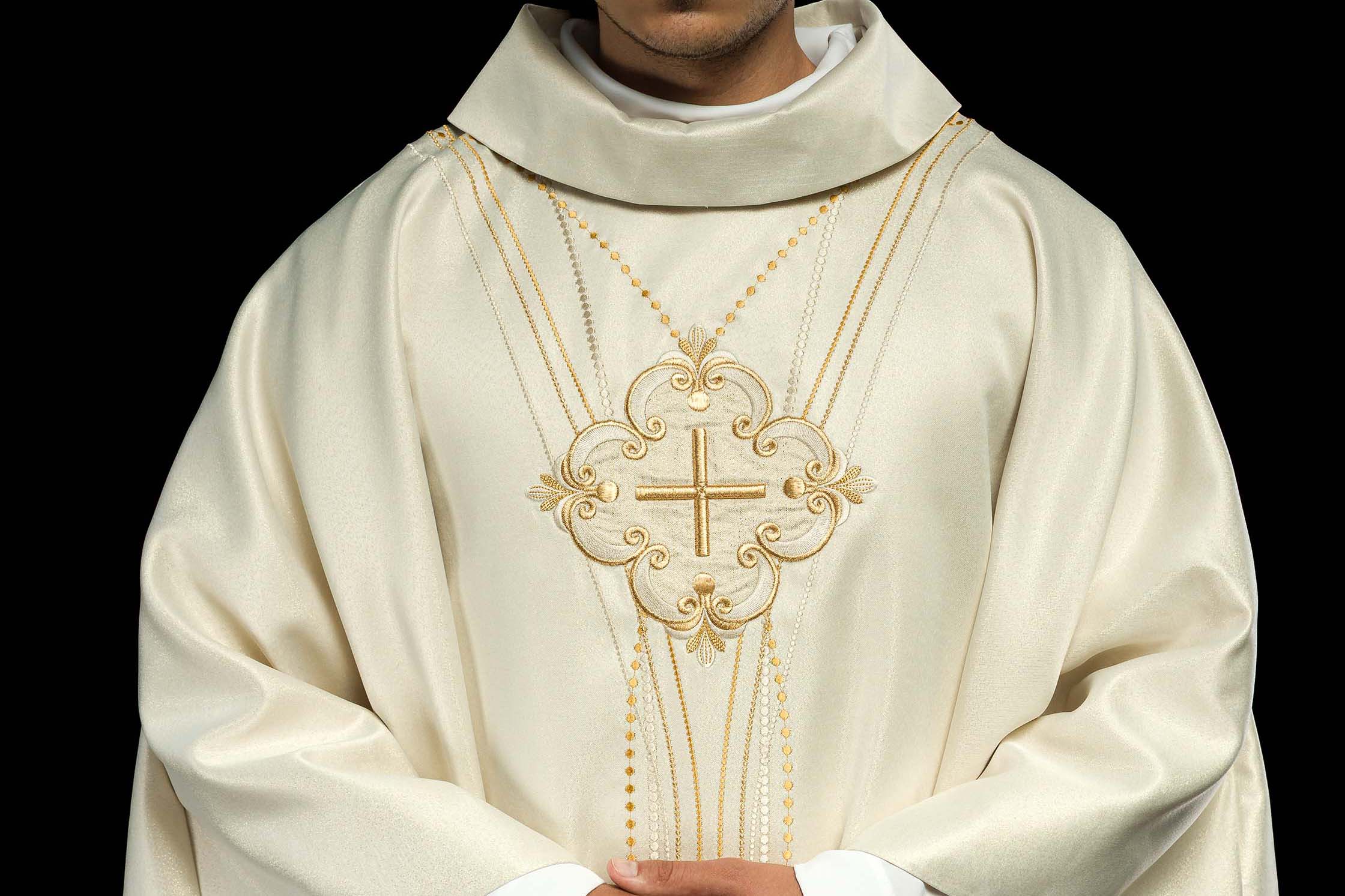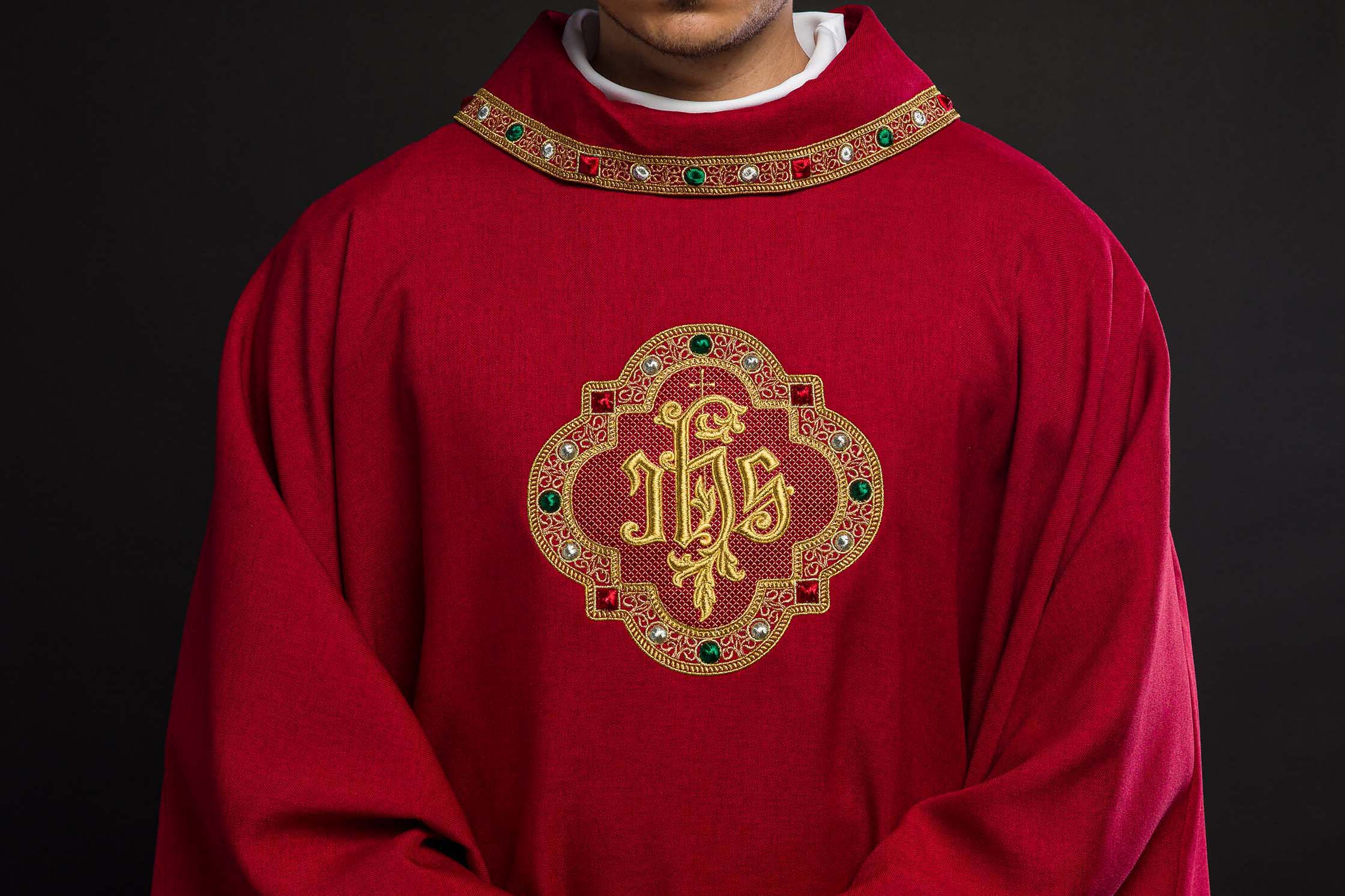
How to Prepare the Liturgy for a Parish Feast Day: A Step-by-Step Guide
How to prepare the liturgy for a parish feast? A step-by-step guide
A parish feast is one of the most important events in the life of every church community. It is a time of special grace, reflection on the life of the parish's patron saint, and an opportunity to deepen the bond with God and neighbors. Effective preparation for the parish feast liturgy requires commitment, good organization, and an understanding of its profound meaning. This article will guide you through the key stages of this process, from selecting appropriate vestments and decorations to organizing musical accompaniment and logistics, ensuring that the celebration is solemn, memorable, and brings spiritual fruits.
What is a parish feast and what is its significance?
Before we delve into the details of preparation, it is worth recalling what a parish feast is. The feast, also known as the parish jubilee, is a celebration in honor of the patron saint of the parish or another significant anniversary related to its history or life. It is a day when the faithful gather to honor their patron saint and, through his intercession, ask for God's blessing. The feast is not only an opportunity for a festive gathering but, above all, for spiritual renewal, repentance, and strengthening of faith. It is worth remembering that the parish feast is also an excellent opportunity to obtain a plenary indulgence for fulfilling certain conditions, which further emphasizes its importance.
What is the difference between a plenary and a partial indulgence?
In the Catholic Church, we distinguish between two types of indulgences: plenary and partial. A plenary indulgence, obtained during the parish feast, completely remits the temporal punishment for sins whose guilt has already been forgiven in the sacrament of penance. To obtain it, certain conditions must be met: receiving the sacrament of penance and reconciliation, receiving Holy Communion, reciting a prayer in the intentions of the Holy Father, and performing an action endowed with indulgence (e.g., participating in the feast celebration). A partial indulgence, on the other hand, remits part of the temporal punishment, and its extent depends on the degree of our love for God. Participation in the feast liturgy, even without fulfilling all the conditions, gives us the opportunity to obtain a partial indulgence.
What are the traditional elements of the feast liturgy?
Each parish feast has its specific traditions, often related to the person of the patron saint. However, there are certain universal elements that create a solemn atmosphere of celebration. These include: a solemn Mass with the participation of guests (often a bishop or friendly priests), a Eucharistic procession or with relics of the patron saint, an occasional homily focusing on the life and teachings of the patron saint, as well as songs and music referring to the feast. This is often accompanied by additional devotions, blessings of the faithful, and sometimes additional attractions such as festivals or integration meetings.
Step 1: Planning and organization
The key to the success of every celebration, including the parish feast, lies in careful planning. The earlier we begin preparations, the smoother the whole process will be and the greater the chance that everything will be buttoned up.
Setting the date and time of the celebration
The first step is to determine the exact date and time of the main feast celebrations. Most often, the feast is celebrated on the day of the liturgical memorial of the parish's patron saint. However, it is worth checking whether this date does not conflict with other important events in the diocese or local community. If the feast day falls on a weekday, the feast Mass is often moved to the nearest Sunday to allow more faithful to participate. It is also good to plan additional devotions and accompanying events to create a comprehensive offer for parishioners.
Formation of the preparation team
No feast will take place without a committed group of parishioners. Therefore, it is crucial to create a team responsible for preparing the liturgy. This team can be divided into subgroups, each of which will deal with a specific area: from decoration, through musical accompaniment, preparation of invitations, to logistics and guest service. Clear definition of roles and responsibilities, regular meetings, and good communication between team members are essential for the smooth running of work.
Determining the budget
Each event requires a specific budget. It is worth drawing up a realistic financial plan, taking into account the costs associated with liturgical vestments, decorations, musical accompaniment, any fees for invited guests, printing of information materials, as well as the costs of organizing any additional events. It is worth considering obtaining funds from various sources, e.g., from the parish collection box, voluntary donations from the faithful, or sponsorship support.
Step 2: Liturgical preparation
The heart of the feast celebration is the liturgy. Proper preparation of its elements will ensure a solemn atmosphere and emphasize the significance of the celebrated event.
Selection of liturgical vestments
The appropriate selection of liturgical vestments is crucial to emphasize the solemn character of the Mass. Depending on the liturgical season, the color of the day, and the nature of the patron saint's feast, the appropriate vestments should be chosen. For the feast, vestments in white or gold are often chosen, symbolizing joy, holiness, and triumph. It is worth considering the possibility of renting or purchasing new, decorative chasubles, stoles, and copes, which will emphasize the uniqueness of the moment. For example, a beautiful chasuble with rich embroidery depicting symbolism related to the parish's patron saint can be the central point of the celebration. Sets of chalice linens, veils, and other liturgical accessories that complete the priest's attire may also be useful.
What vestments to choose for the feast celebration?
When choosing vestments for the feast, it is worth being guided primarily by the symbolism of liturgical colors and embroidery motifs. White or gold is the most appropriate, symbolizing joy, purity, and solemnity. You can consider chasubles with motifs referring to the parish's patron saint - for example, if the patron saint is St. Joseph, a beautiful embroidery with his figure or symbol (lily, trowel) will be an excellent choice. Embroidered chasubles made of high-quality fabrics, which will give splendor to the celebration, are especially recommended. Don't forget to match the color and style of the stole. It is also worth thinking about sets of chalice linens, which should harmonize with the other vestments. In the case of celebrations with the participation of a bishop, appropriate episcopal vestments should be remembered.
Where to buy or rent liturgical vestments?
The ideal place to buy or rent liturgical vestments is a specialized store with church supplies. HAFTINA TEXTILE GROUP SP. Z O. O., operating at [https://haftinausa.com](https://haftinausa.com), offers a wide selection of high-quality chasubles, stoles, albs, copes, and chalice linens, often made of the best materials with attention to embroidery details. This store can be an excellent source of inspiration and professional advice in choosing the right vestments for such an important event as the parish feast.
Preparation of church decorations
The decoration of the church plays a significant role in building the atmosphere of the feast. Decorations should emphasize the rank of the celebration and refer to the figure of the parish's patron saint.
Choosing the color scheme of decorations
As with liturgical vestments, the color scheme of the decorations should be consistent with the liturgical season and the nature of the feast. White, gold, but also those associated with the patron saint (e.g., green for St. John the Baptist, blue for the Mother of God) often dominate at the feast. Flags, flowers, fabrics, candles - everything should create a harmonious whole.
Decorations referring to the parish's patron saint
The central element of the decoration may be the image of the parish's patron saint, his relics, or symbols associated with him. It is worth taking care of the appropriate exposition of the altar, ambo, and the place of presiding over the celebration. You can use elegant altar cloths, embroidered napkins on the counter, candlesticks, and candelabras. It is worth remembering the decoration of the entrance to the church, which should invite you to celebrate from the threshold.
Preparation of musical accompaniment
Music is an integral element of the liturgy, enhancing its solemn character. A well-chosen musical repertoire and appropriate performers will ensure an unforgettable experience.
Selection of songs and performers
Musical pieces should be selected that will fit the nature of the celebration and be able to move the hearts of the faithful. It is worth considering both classical liturgical songs and contemporary pieces of a solemn nature. It is crucial to ensure an appropriate musical ensemble - parish choir, choir, organist, and perhaps invited musicians. A well-prepared repertoire, including songs for the entrance, offertory, Holy Communion, and the end of Mass, is essential.
Rehearsals and technical preparation
Rehearsals with the performers are also extremely important to ensure synchronization and smooth performance. It is also necessary to take care of the appropriate sound system of the church so that the music is clear and reaches all participants of the liturgy.
Step 3: Organizational and logistical preparation
In addition to strictly liturgical aspects, organizational preparation is also crucial, which will ensure the smooth running of the entire celebration.
Ensuring the participation of guests
It is worth taking care to invite important guests to the feast - the bishop, friendly priests, representatives of local authorities, or parish organizations. Appropriate places in the presbytery should be prepared for them and comfortable conditions should be ensured. It is also worth thinking about preparing modest gifts for invited clergymen.
Preparation of information materials
It is good to prepare information materials for the faithful - parish announcements, invitations, or even a special program of feast celebrations. It is also worth taking care of appropriate promotion of the event, using notice boards, the parish website, or social media.
Planning additional events
The parish feast is often not only Mass, but also a whole day or weekend full of events. It is worth considering organizing a parish festival, an integration meeting, an exhibition dedicated to the patron saint, or other attractions that will enrich the nature of the feast and allow the faithful to get to know each other better and celebrate together.
Take care of order and safety
It is important to ensure order and safety for all participants during the celebration. It is necessary to take care of the appropriate marking of parking spaces, the designation of people responsible for order in the church and in the parish area. In the case of larger gatherings, it is worth considering cooperation with the appropriate services.
Step 4: Feast celebration – summary and reflection
The very day of the feast is the culmination of many months of preparation. It is important that everything runs smoothly and according to plan, and above all, that the participants can experience the spiritual depth of this event.
The course of Mass and devotions
During the celebration itself, it is crucial to focus on the liturgy, jointly experiencing its mysteries and prayer. Priests should remember about a warm and inspiring homily, and all participants about dignified behavior and engagement in the liturgy. It is worth ensuring that all elements - from songs, through readings, to the blessing - are prepared and performed with due diligence.
Thanks and further steps
After the celebration, it is important to thank all those who contributed to its preparation and smooth running - the preparation team, founders, volunteers, as well as all participants. It is also worth considering what could be improved in the future so that subsequent feasts are even more beautiful and fruitful.
What products from Haftina can be useful during the feast?
During the preparation of the feast liturgy, the offer of HAFTINA TEXTILE GROUP SP. Z O. O. can be extremely helpful. Carefully made **chasubles**, often with embroidery motifs referring to specific holidays or figures of saints, are a key element of the celebrant's attire. **Stoles** in the appropriate color, complementing the chasuble, are equally important. **Albs and surplices** for altar servers and lectors will ensure a uniform and solemn appearance of the liturgical service. **Liturgical copes**, especially during processions, will add splendor. One cannot forget about **chalice linens**, including palls, corporals, and purificators, often decorated with symbolic embroidery that harmonizes with the other vestments. Also beautiful **veils for the chalice and ciboria** can be an elegant addition. **Altar cloths** with embroidered motifs, as well as **napkins for the lectern or ambo**, can be useful for decorating the church. The company also offers a wide range of **liturgical accessories**, such as bells, thuribles, sprinklers, or candlesticks, which will complement the decoration of the church. Personalization of products, e.g., embroidery with the parish's coat of arms, can further emphasize the unique character of the feast.
Sample products from Haftina's offer for the feast:
- Elegant chasuble in white or gold with embroidery referring to the parish's patron saint.
- Set of chalice linens with symbolic embroidery (e.g., IHS, Paschal Lamb, Chalice and Host).
- Altar cloths with front and side embroidery, tailored to the liturgical season.
- Embroidered veils for chalices, emphasizing the solemn character of the Mass.
- Brass or nickel-plated accessories, such as candlesticks or thuribles, which will add shine to the altar.
Preparing the liturgy for a parish feast is a process that requires commitment and attention to detail. From careful planning, through the selection of appropriate vestments and decorations, to refining the musical and logistical setting - every element matters. Let us remember that the goal is to create not only a beautiful, but above all a deeply spiritual celebration, which will strengthen the community and contribute to the growth of faith. Using the rich offer of HAFTINA TEXTILE GROUP SP. Z O. O., you can be sure that every liturgical element will be a testimony to the beauty and diligence that the celebrated occasion deserves.
```




